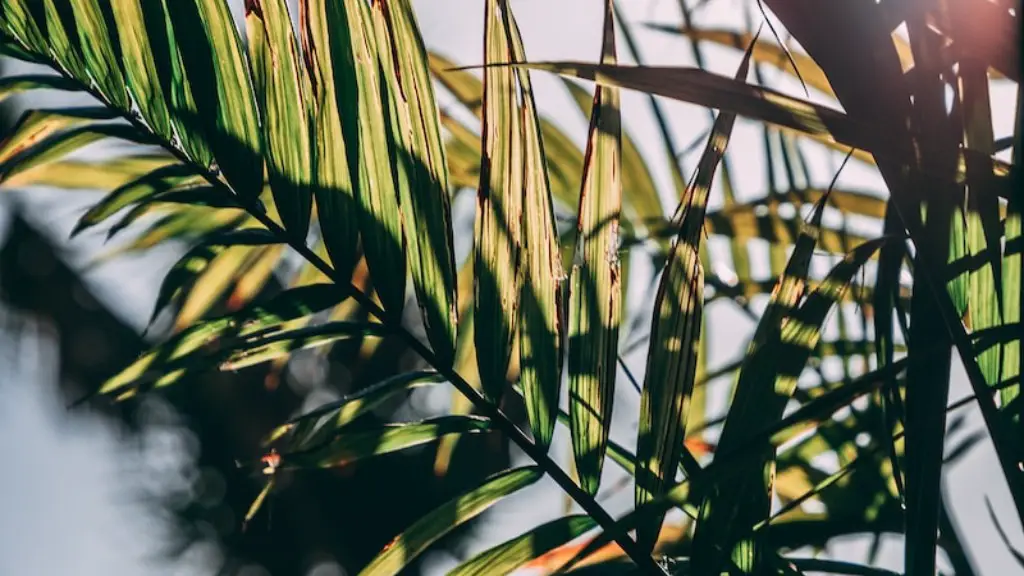Watering a lemon tree in a pot is essential to ensure its health and fruiting potential. The frequency of watering depends on a number of factors, including the size of pot, the type of soil and the weather. Generally, a lemon tree in a pot requires water every 3-7 days, with more necessary in hotter, dryer weather and less needed in cooler, wetter conditions. It’s important to observe your tree so that you can recognize when it needs a drink. Here’s how to know when it’s time to water your tree.
The first sign your lemon tree needs a drink is when the leaves begin to droop, become pale, and the shoots begin to stop growing. This indicates that the tree’s nervous system has been affected. If you detect this, promptly water your tree, as prolonged exposure to drought can result in plant death. To determine if the tree needs watered, lift the pot and check whether it’s heavy or light. If it feels light, it’s time to water.
If in doubt, it’s best to be proactive and err on the side of caution when it comes to watering. An easy way to test is to stick your finger in the soil and check whether it’s wet or dry. If the soil is dry to an inch below the surface of the pot, add water until it comes out the drainage holes. Whilst over watering is much worse than not watering enough, don’t be scared to repot the tree in a bigger pot if it continues to run dry.
There are a number of ways to apply water, from using a watering can, to a hose, to interconnecting a drip feed system to existing sprinkler heads. If using a watering can, water should be applied slowly and evenly to encourage absorption. If using a hose, it’s important to start and end with a light spray. To ensure that the soil isn’t entirely water-logged, which blocks oxygen from the root system, allow the excess water to run off the pot’s drainage holes and check the soil after it’s had a drink.
The key to keeping your lemon tree healthy is to gauge the water requirements according to environmental factors, so that it doesn’t become overly stressed. Depending on pot size and climate, it’s best to water your tree every 3-7 days until it’s established in its new home, at which point you’ll be able to accommodate its changing water requirements with more precision.
Soil Requirements
The type of soil used to house your lemon tree is important for successful growth. A good soil should be well drained, loose and airy, able to retain moisture and provide plenty of nutrients to the plant.
A range of high-organic materials, such as compost, bark fines or steer manure, should be added to the soil mix to create a loose, friable texture. You may also include addition fertilizers or water retaining crystals to ensure quick and easy absorption.
Water Quality
Lemon trees prefer water that is slightly acidic (pH 6-6.5) and low in sodium, with a free calcium content of more than 60mg/L. If possible, avoid using tap water, which contains chlorine, fluoride, and salts. These can inhibit the absorption of important nutrients that the lemon tree requires. Instead, use filtered or rainwater, or fill the pot with just enough tap water until new roots begin to sprout before switching to rainwater.
Mulching & Potting
Mulching is a great way to retain moisture in the soil, and a lemon tree in a pot will benefit from an even layer of organic material over its surface. This will prevent evaporation from the soil, and it also serves as a deterrent to weeds.
When potting a lemon tree, ensure the pot is high enough for the plant’s roots to develop without getting cramped. The larger the tree, the bigger the pot will need to be. Repotting should be done every few years to avoid overcrowding and ensure optimal growth.
Signs of Too Much Water
Whilst a lemon tree in a pot needs plenty of water, it’s easy to over-water, leading to root rot and other environmental problems. Signs of too much water include pale and limp leaves, a swollen pot, and a sour smell coming from the soil. Over-watering can often be spotted by the inability of the pot to easily lift, as too much water prevents the soil from drying out. If this happens, immediately reduce the amount of water and apply a dry topsoil to the surface of the pot to help absorb some moisture.


